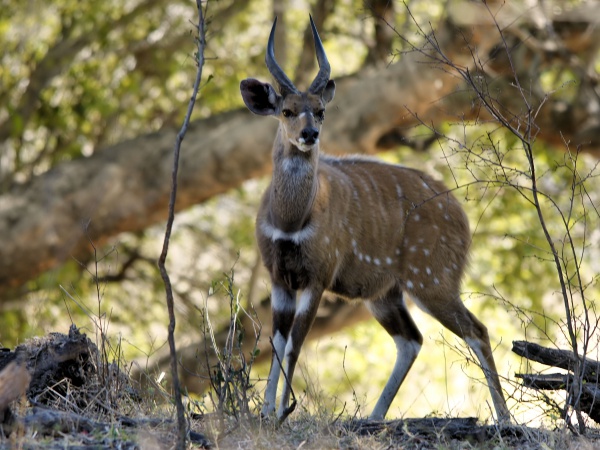Facts About Bushbuck, Harnessed Antelope
The harnessed bushbuck, also known as the kéwel, is a small to medium-sized antelope native to West and Central Africa. Previously grouped with the Cape bushbuck under the general term "bushbuck" the harnessed bushbuck is now recognized as a distinct species with its own unique geographic range. It is closely related to the nyala and other tragelaphine antelopes.
The harnessed bushbuck ranges from Senegal and southern Mauritania across the Sahel, extending east to Ethiopia and south to Angola and the Democratic Republic of the Congo. They thrive in wooded savannas, forest-savanna mosaics, rainforest regions, montane forests, and semi-arid areas, though they avoid dense rainforests.
This antelope is relatively small compared to other tragelaphines, featuring a red or yellow-brown coat with distinctive stripes. Males and females resemble each other in terms of patterns and coloration. Interestingly, genetic studies have revealed that some populations do not align with previously described subspecies. The harnessed bushbuck was first described by Peter Simon Pallas in 1766, and the name "kéwel" is derived from the Wolof language spoken in Senegal.
Despite its wide distribution, research on the harnessed bushbuck's biology is limited compared to its relative, the Cape bushbuck. Most of our knowledge comes from museum specimens and hunting trophies.

 Democratic Republic of the Congo
Democratic Republic of the Congo